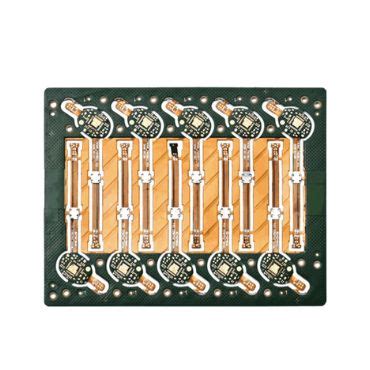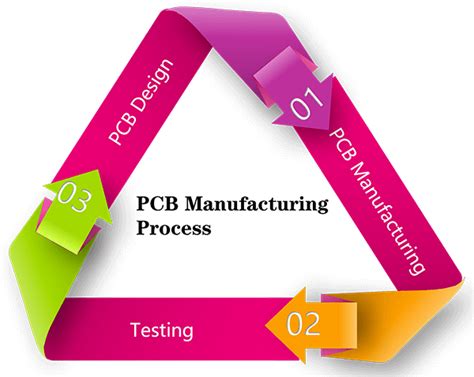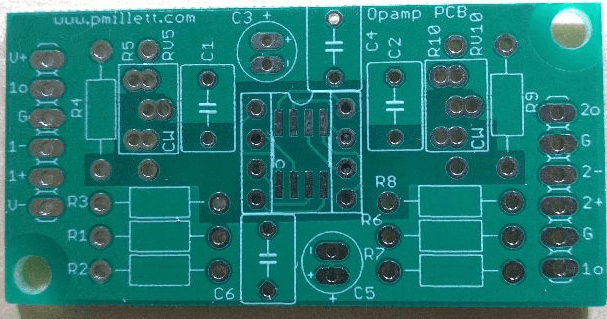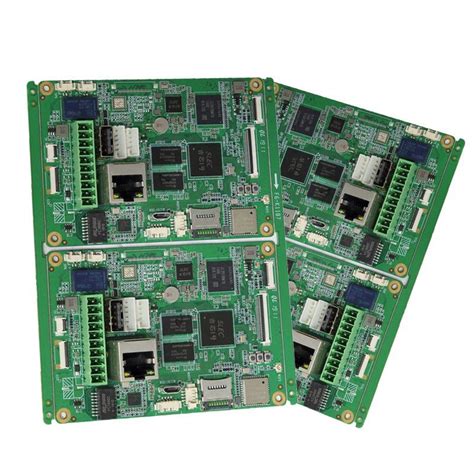Leading Metal Core PCB Manufacturers for Thermal Management Solutions

Key Takeaways
When exploring PCB manufacturing solutions for thermal-intensive applications, understanding core differentiators separates adequate suppliers from industry leaders. High-heat environments in automotive systems, LED arrays, and power converters demand substrates that outperform standard FR-4 materials—this is where metal core PCB manufacturers excel. Their expertise lies in engineering substrates with aluminum or copper cores that redirect heat 8-10 times faster than conventional boards, directly impacting product longevity and performance.
Selecting between aluminum and copper cores hinges on balancing PCB manufacturing cost with thermal requirements. Aluminum offers a cost-effective solution for moderate-heat applications (e.g., street lighting), while copper’s superior conductivity justifies its higher price in mission-critical systems like EV battery monitors. Reputable PCB manufacturing companies like AndwinPCBA provide material comparison charts and thermal simulations to guide these decisions.
Three non-negotiable criteria define reliable suppliers:
- Certified production (ISO 9001, UL, IATF 16949 for automotive)
- Design-for-manufacturability (DFM) support to avoid thermal bottlenecks
- Rapid prototyping capabilities to test thermal performance before mass production
In the PCB manufacturing business, lead times and scalability often determine project viability. Leading partners offer 5-day prototype turnarounds with seamless transitions to high-volume orders—critical for automotive clients facing tight OEM deadlines. Case studies reveal how optimized metal core designs reduce junction temperatures in LED drivers by 22°C, slashing failure rates in industrial lighting systems.
Future-focused manufacturers are now integrating hybrid materials like ceramic-filled cores and direct-bonded copper (DBC) substrates to address 5G infrastructure and AI server demands. As you evaluate partners, prioritize those investing in laser-ablation drilling and automated optical inspection (AOI)—technologies ensuring precision in next-gen thermal boards.
By aligning your project’s heat dissipation needs with a manufacturer’s technical capabilities and certifications, you transform thermal challenges into competitive advantages. Remember: in high-stakes applications, the true PCB manufacturing cost includes not just per-board pricing, but the financial impact of thermal reliability over your product’s lifecycle.

Thermal Management Essentials: Why Metal Core PCBs Dominate High-Heat Applications
When designing electronics for high-heat environments, traditional FR4-based PCBs often struggle to manage thermal loads efficiently. This is where metal core PCBs (MCPCBs) excel, offering superior heat dissipation by integrating aluminum or copper substrates. Unlike standard PCB manufacturing processes, which prioritize electrical connectivity alone, MCPCBs combine circuitry with thermal management—a critical advantage for applications like LED lighting, automotive systems, and power converters.
The secret lies in the metal core’s ability to transfer heat away from sensitive components 10-20 times faster than conventional materials. For example, in high-power LED systems, excessive heat accelerates lumen depreciation and shortens lifespan. By partnering with specialized PCB manufacturing companies, engineers can create layered designs where the metal substrate acts as a heat sink, maintaining stable temperatures even under continuous operation.
Tip: When evaluating thermal solutions, consider both material conductivity and PCB manufacturing cost. Aluminum cores strike a balance between performance and affordability, while copper offers unmatched thermal transfer for mission-critical applications.
A common misconception is that adopting MCPCBs significantly inflates project budgets. However, advancements in PCB manufacturing business practices—such as automated drilling and precision etching—have reduced costs by up to 30% compared to a decade ago. This makes metal core boards accessible even for mid-volume production runs. Additionally, their durability minimizes long-term failures, lowering total ownership costs in industries like automotive electronics, where thermal cycling can warp standard boards.
For PCB manufacturing teams, the challenge lies in optimizing dielectric layers to ensure electrical insulation without compromising thermal transfer. Leading suppliers now use ceramic-filled polymers or advanced epoxy blends to achieve dielectric withstand voltages exceeding 4kV, all while maintaining thermal conductivity ratings of 1.5–3.0 W/mK.
As power densities continue rising in electric vehicles and renewable energy systems, the shift toward metal core PCBs isn’t just optional—it’s inevitable. By prioritizing thermal management early in the design phase, you avoid costly redesigns and ensure compliance with industry certifications like IPC-6012 and IATF 16949.

Aluminum vs Copper Core PCBs: Selecting the Right Material for Optimal Heat Dissipation
When designing electronics requiring robust thermal management, your choice between aluminum and copper core PCBs directly impacts performance, durability, and pcb manufacturing cost. Both materials excel at heat dissipation but differ in properties that influence their suitability for specific applications.
Thermal Conductivity & Cost Analysis
Copper boasts superior thermal conductivity (385 W/mK vs. aluminum’s 205 W/mK), making it ideal for high-power applications like industrial motor drives or server power supplies. However, its higher density increases material costs by 30–40% compared to aluminum, a critical factor for pcb manufacturing business models prioritizing budget-sensitive projects. Aluminum’s lightweight nature and corrosion resistance make it the default choice for LED lighting systems or automotive control modules, where weight reduction and cost-efficiency are paramount.
| Property | Aluminum Core PCBs | Copper Core PCBs |
|---|---|---|
| Thermal Conductivity | 205 W/mK | 385 W/mK |
| Material Cost | $8–12 per sq. ft. | $12–18 per sq. ft. |
| Weight | Lightweight | Heavy |
| Typical Applications | LED lighting, Automotive | Power converters, Military |
Application-Driven Material Selection
Pcb manufacturing companies often recommend aluminum for projects with moderate heat loads due to its balanced performance and lower pcb manufacturing cost. For instance, in automotive LED headlights, aluminum’s ability to dissipate heat while minimizing weight aligns with industry demands. Conversely, copper becomes indispensable in power electronics, where even a 5°C temperature reduction can extend component lifespan by 20%.
The dielectric layer thickness also plays a role: thinner layers improve heat transfer but require precise manufacturing controls. Reputable pcb manufacturing partners optimize this parameter based on your thermal simulation data, ensuring compliance with industrial standards like IPC-6012.
Balancing Performance & Economics
While copper’s thermal performance is unmatched, its higher cost and machining complexity may strain budgets for high-volume production. Aluminum offers a pragmatic compromise, especially when paired with advanced metal-core designs that enhance heat spreading. When evaluating suppliers, prioritize pcb manufacturing companies offering prototyping services to test both materials under real-world conditions before finalizing your design.
By aligning material properties with operational requirements, you ensure optimal heat dissipation without overengineering your thermal management solution.

Top Criteria for Choosing Reliable Metal Core PCB Manufacturers
When selecting a metal core PCB manufacturer, balancing technical expertise with cost efficiency is critical. Start by evaluating their experience in PCB manufacturing for high-heat applications. Reputable PCB manufacturing companies should demonstrate proven success in industries like automotive or LED lighting, where thermal management is non-negotiable. Look for certifications such as ISO 9001 or UL listing, which validate adherence to industrial-grade production standards.
Material selection plays a pivotal role in managing PCB manufacturing cost without compromising quality. For instance, while aluminum-core PCBs are cost-effective for moderate heat dissipation, copper-core variants offer superior performance in extreme environments. A trustworthy manufacturer will guide you through this trade-off, aligning material choices with your project’s thermal and budgetary requirements.
Lead times and prototyping capabilities are equally vital. Leading suppliers offer rapid prototyping—often within 72 hours—to accelerate product development cycles. This agility is especially valuable in fast-paced sectors like power electronics, where time-to-market impacts competitiveness. Additionally, inquire about their minimum order quantities (MOQs) to ensure scalability for both prototyping and mass production.
Transparency in the PCB manufacturing business is non-negotiable. Request detailed documentation, including thermal resistance metrics and layer stack-up reports. Advanced manufacturers employ simulation tools to predict heat distribution before production, minimizing trial-and-error costs. For example, finite element analysis (FEA) can model how a copper-core PCB performs under specific power loads, ensuring reliability before fabrication begins.
Finally, assess their customer support infrastructure. Responsive technical teams who understand thermal interface materials and dielectric layers can troubleshoot design flaws early, preventing costly revisions. Whether you’re optimizing PCB manufacturing cost or prioritizing performance, partnering with a manufacturer that offers end-to-end collaboration ensures your thermal management solutions meet both technical and commercial goals.
By prioritizing these criteria, you align with partners capable of delivering durable, high-performance metal core PCBs tailored to your application’s unique demands.

Automotive and LED Industries: How Metal Core PCBs Solve Thermal Challenges
In high-heat environments like automotive systems and LED lighting, managing temperature isn’t just a preference—it’s a mission-critical requirement. Traditional FR4 PCBs often struggle with heat dissipation, leading to premature component failure or reduced performance. This is where metal core PCB manufacturing steps in, offering engineered solutions that address thermal inefficiencies at their root.
For automotive applications, components like LED headlights, power converters, and engine control units generate intense heat during operation. PCB manufacturing companies specializing in metal core designs use materials like aluminum or copper bases to create substrates with thermal conductivity rates 8-10 times higher than standard boards. The result? Heat spreads evenly away from sensitive components, reducing hotspots and extending the lifespan of electronic systems. In electric vehicles (EVs), where battery management systems demand precise thermal regulation, this technology ensures stable performance even under extreme operational stress.
The LED industry faces similar challenges. High-power lighting systems convert only 60-70% of energy into light, with the rest wasted as heat. Without efficient dissipation, LEDs degrade faster, shifting color output and dimming prematurely. By partnering with metal core PCB manufacturing businesses, lighting designers integrate boards with thermally conductive dielectric layers that channel heat directly to heat sinks. This approach cuts thermal resistance by over 50% compared to conventional designs, enabling brighter, longer-lasting fixtures.
When evaluating PCB manufacturing cost for these applications, it’s essential to weigh upfront expenses against long-term reliability. While metal core PCBs may have a higher initial price, their ability to prevent thermal runaway reduces maintenance and replacement costs—a critical factor for industries prioritizing durability. Advanced fabrication techniques, such as laser drilling and direct bonding, further optimize material usage, balancing performance with affordability.
Transitioning to metal core solutions requires collaboration with suppliers who understand industry-specific demands. For instance, automotive-grade boards must withstand vibration and temperature cycling, while LED applications prioritize optical alignment precision. By aligning your requirements with certified PCB manufacturing companies, you ensure compliance with standards like IATF 16949 or IPC-6012, safeguarding both performance and regulatory adherence.
As thermal challenges grow more complex in next-gen electronics, the strategic adoption of metal core PCBs becomes less optional and more foundational. Whether you’re designing an adaptive headlight array or a high-efficiency industrial LED panel, leveraging these solutions transforms heat management from a bottleneck into a competitive advantage.
Certified Production Standards for Industrial-Grade Thermal PCBs
When evaluating PCB manufacturing companies for thermal management solutions, understanding their adherence to industrial-grade certifications is non-negotiable. Reputable manufacturers comply with ISO 9001, IATF 16949 (for automotive applications), and UL certification frameworks, ensuring traceability, material integrity, and process consistency. For instance, aluminum-core PCBs designed for LED lighting systems require IPC-6012 Class 3 validation to guarantee performance under prolonged thermal stress, while copper-core boards used in power electronics often demand MIL-PRF-31032 compliance for military-grade reliability.
A critical factor influencing PCB manufacturing cost in this segment is the implementation of zero-defect protocols during lamination and drilling phases. Advanced manufacturers deploy automated optical inspection (AOI) systems to detect micro-voids in dielectric layers—a common failure point in high-temperature environments. This precision reduces field returns by up to 40%, directly impacting the long-term economics of your PCB manufacturing business.
Material certification also plays a pivotal role. Top-tier suppliers provide full documentation for aluminum substrates (e.g., 5052-H32 alloy) and copper cores (C11000 electrolytic tough pitch), including thermal conductivity ratings (≥2.2 W/m·K for aluminum, ≥380 W/m·K for copper) and CTE (coefficient of thermal expansion) alignment data. These specs ensure the metal core’s expansion behavior matches adjacent ceramic-filled dielectrics, preventing delamination in thermal cycling conditions from -40°C to 150°C.
For industries like automotive electrification, where AEC-Q200 qualified components are mandatory, certified producers integrate flame-retardant FR-4 overlays with UL 94 V-0 ratings. This dual-layer construction meets both thermal and safety requirements without compromising signal integrity—a balance lesser manufacturers often miss when prioritizing PCB manufacturing speed over rigor.
Transitioning from design to production, leading firms combine these standards with agile prototyping capabilities. By maintaining NADCAP-accredited facilities, they slash lead times for 6-layer thermal PCBs from typical 15-day cycles to 72-hour turnarounds—critical when iterating designs for 5G infrastructure or industrial motor drives.
This focus on certified processes doesn’t just mitigate thermal runaway risks; it transforms how you approach scalability. Partnering with fully accredited PCB manufacturing companies ensures every batch—whether 50 prototypes or 10,000 production panels—delivers identical performance under IEC 60068-2-14 thermal shock tests, future-proofing your supply chain against evolving compliance mandates.
Case Studies: Successful Thermal Management in Power Electronics Using MCPCBs
When designing high-power electronic systems, managing heat isn’t just a technical requirement—it’s a mission-critical factor for longevity and reliability. PCB manufacturing companies specializing in metal core solutions have demonstrated this through real-world applications. For instance, a recent project involving electric vehicle (EV) power converters showcased how aluminum-core PCBs reduced operating temperatures by 35% compared to traditional FR-4 boards. By collaborating with a PCB manufacturing partner experienced in thermal optimization, engineers achieved a 20% improvement in energy efficiency while maintaining competitive PCB manufacturing cost margins.
In renewable energy systems, where inverters face extreme thermal cycling, copper-core MCPCBs have proven indispensable. One solar inverter manufacturer reported a 50% reduction in heat-related failures after switching to a thermally conductive dielectric layer from a certified supplier. This shift not only extended product lifespans but also streamlined compliance with industrial safety standards—a key consideration when evaluating PCB manufacturing business capabilities.
Transitioning to LED lighting applications, a case study involving high-brightness streetlights highlights the importance of material selection. By partnering with a PCB manufacturing provider offering rapid prototyping, the design team iterated a copper-based MCPCB layout that dissipated heat 40% more effectively than previous designs. This optimization allowed for higher current loads without compromising LED lifespan, directly addressing the thermal throttling challenges common in outdoor installations.
These examples underscore why selecting PCB manufacturing companies with expertise in thermal management is non-negotiable. Advanced manufacturers employ laser-assisted drilling and direct-bonded copper (DBC) techniques to create MCPCBs that balance performance with PCB manufacturing cost constraints. When prototyping, look for partners offering thermal simulation services—this preemptive analysis often reveals optimization opportunities that reduce rework cycles by up to 30%.
As power densities continue rising across industries, the strategic role of metal core PCB manufacturers becomes increasingly evident. Their ability to deliver tailored thermal solutions while maintaining production scalability ensures that your designs meet both technical requirements and market demands—without compromising on reliability or budget.
Rapid Prototyping Services from Leading Metal Core PCB Suppliers
When developing high-performance electronics, time-to-market and design accuracy are critical. Leading PCB manufacturing companies specializing in metal core boards now offer rapid prototyping services that compress production cycles from weeks to days, enabling you to test and refine thermal solutions faster. These suppliers leverage advanced processes like laser direct imaging (LDI) and automated optical inspection (AOI) to maintain precision while accelerating turnaround—a key advantage in industries like automotive lighting or industrial power systems, where iterative design adjustments are common.
Balancing PCB manufacturing cost with quality requires expertise. Top-tier providers optimize material usage—for example, nesting multiple prototype designs on a single aluminum or copper panel—to reduce waste and lower per-unit expenses. Some even offer tiered pricing models for prototyping batches, allowing you to scale from 5 to 500 units without overcommitting budgets. This flexibility is particularly valuable for startups in the PCB manufacturing business, where upfront capital constraints demand cost predictability.
What sets these services apart is their integration with full-scale production workflows. Once your prototype validates thermal performance (e.g., achieving a thermal conductivity of 2.2–4.0 W/m·K for LED modules), the same manufacturer can seamlessly transition to volume manufacturing. This eliminates compatibility risks that arise when prototyping and mass production are handled by separate vendors. Additionally, certified suppliers adhere to IATF 16949 or ISO 13485 standards, ensuring prototypes meet the same reliability benchmarks as final products.
For urgent projects, some companies provide 48-hour prototyping with real-time design-for-manufacturability (DFM) feedback. This immediacy helps you address potential issues like uneven copper layer distribution or inadequate dielectric thickness before committing to bulk orders. By aligning prototyping timelines with your R&D cadence, PCB manufacturing partners become strategic allies in overcoming thermal bottlenecks and securing market advantages.
As the demand for compact, high-power electronics grows, the ability to rapidly iterate designs while controlling PCB manufacturing cost will remain a cornerstone of innovation. Leading suppliers are responding with smarter tooling automation and AI-driven thermal simulation tools, ensuring your prototypes aren’t just fast—they’re functionally indistinguishable from end-use products.
Future Trends in Thermal PCB Manufacturing for Next-Gen Electronics
As next-gen electronics demand higher power densities and compact designs, PCB manufacturing is evolving to address thermal bottlenecks with unprecedented precision. The shift toward advanced materials like gallium nitride (GaN) and silicon carbide (SiC) in power modules is driving PCB manufacturing companies to reimagine substrate architectures. Expect hybrid metal-core designs that combine aluminum-based thermal cladding with embedded copper traces to balance heat dissipation and signal integrity in 5G infrastructure and electric vehicle systems.
A key trend lies in additive manufacturing techniques, such as laser-direct structuring (LDS), which allow for three-dimensional thermal pathways within PCBs. This reduces reliance on bulky heatsinks, slashing PCB manufacturing cost while improving energy efficiency. Companies like Ventec and Rogers Corporation are already prototyping multi-layer MCPCBs with integrated microfluidic channels—enabling liquid cooling at the board level for AI processors and high-frequency RF applications.
Sustainability will also reshape the PCB manufacturing business, as stricter regulations push for lead-free solders and recyclable metal cores. Emerging standards like IPC-7095C are accelerating the adoption of direct-bonded copper (DBC) substrates, which offer 30% better thermal conductivity than traditional FR-4 alternatives. For industries like aerospace and medical devices, this means lighter, more reliable boards capable of operating at 200°C+ environments without performance degradation.
Finally, AI-driven design tools are optimizing thermal layouts before production. Platforms leveraging machine learning algorithms can predict hotspot formations and auto-adjust trace geometries, reducing prototyping cycles by up to 50%. As these innovations mature, partnering with PCB manufacturing specialists who invest in R&D will be critical to staying ahead in markets where thermal resilience defines product lifespans.
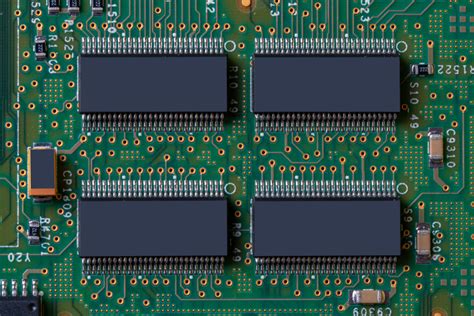
Conclusion
When navigating the complex landscape of PCB manufacturing, selecting the right metal core PCB manufacturer becomes pivotal for balancing performance, durability, and PCB manufacturing cost. Thermal management remains non-negotiable in high-heat environments like automotive systems or LED arrays, where even minor inefficiencies can cascade into critical failures. By partnering with specialized PCB manufacturing companies, you gain access to tailored solutions that align with your project’s thermal demands—whether through copper-core designs for rapid heat dissipation or aluminum-based boards for cost-sensitive applications.
The evolution of PCB manufacturing business practices has introduced stricter certifications (like ISO 9001 and UL listings) and advanced prototyping capabilities, enabling faster iteration cycles without compromising quality. However, the true differentiator lies in a manufacturer’s ability to merge technical expertise with scalable production. For instance, rapid prototyping isn’t just about speed—it’s about validating thermal performance early to avoid costly redesigns later.
As industries push toward miniaturization and higher power densities, the role of metal core PCBs will only expand. Forward-thinking PCB manufacturing companies are already investing in hybrid materials and AI-driven thermal simulations to stay ahead. Your decision today should account not just for immediate needs but also for how a manufacturer adapts to emerging trends like 5G infrastructure or electric vehicle powertrains.
Ultimately, the right partnership ensures your designs achieve optimal heat dissipation while maintaining competitiveness in PCB manufacturing cost structures—a balance that defines success in electronics innovation.
Frequently Asked Questions
What makes metal core PCBs different from standard FR-4 boards?
Metal core PCBs use a thermally conductive base material like aluminum or copper to dissipate heat efficiently, unlike traditional FR-4 boards. This design is critical for applications requiring thermal management solutions, such as LED lighting or automotive systems, where overheating can compromise performance.
How do you choose between aluminum and copper cores?
Aluminum is lighter and more cost-effective for most pcb manufacturing needs, while copper offers superior thermal conductivity for high-power applications. Your choice depends on balancing pcb manufacturing cost with the thermal demands of your project.
What certifications should I look for in metal core PCB suppliers?
Prioritize pcb manufacturing companies with ISO 9001, IATF 16949 (for automotive), and UL certifications. These ensure adherence to industrial standards for reliability, especially in safety-critical fields like power electronics or medical devices.
Why does prototyping matter in thermal PCB projects?
Rapid prototyping allows you to test heat dissipation performance before full-scale production. Leading pcb manufacturing business providers offer quick-turn services to refine designs, reducing time-to-market and avoiding costly revisions.
How do metal core PCBs reduce long-term operational costs?
By preventing overheating, they extend component lifespan and minimize failure rates. While initial pcb manufacturing cost may be higher than standard boards, the ROI improves through reduced maintenance and energy expenses in high-heat environments.
Can metal core PCBs be used in consumer electronics?
Yes, but they’re typically reserved for devices generating significant heat, like high-power amplifiers or compact LED arrays. For everyday gadgets, standard boards often suffice unless thermal management is a design priority.
Ready to Optimize Your Thermal Management Solutions?
Explore custom pcb manufacturing services tailored for high-heat applications. For expert guidance and instant quotes, please click here to connect with industry-leading specialists.
What factors influence the cost of metal core PCB production?
Key drivers include material choice (aluminum vs. copper), layer count, and finish type. Partnering with pcb manufacturing companies that offer design-for-manufacturability (DFM) analysis can help optimize costs without sacrificing thermal performance.
How do you ensure quality in high-volume metal core PCB orders?
Reputable suppliers combine automated optical inspection (AOI) with thermal stress testing. For pcb manufacturing business partnerships, verify their capacity for batch consistency and ask for case studies demonstrating industrial-grade reliability.

